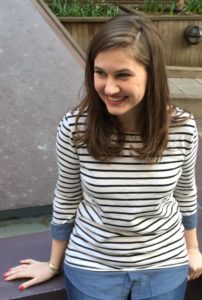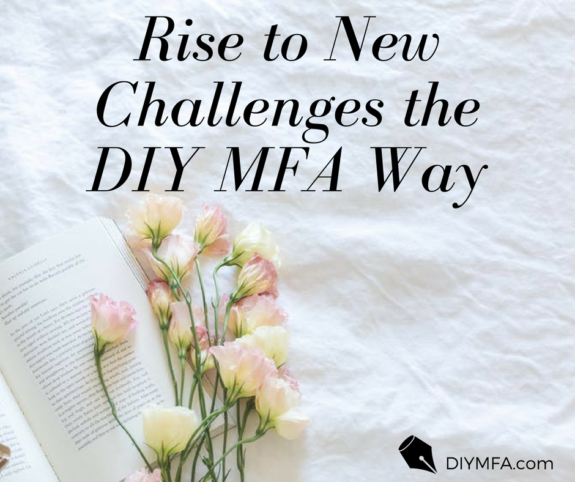“We are all apprentices in a craft where no one becomes a master.”—Ernest Hemingway
Writers are, by nature, dreamers. We dream about finishing a book. Then we dream about getting an agent. A book deal. Hitting the New York Times list. On and on and on.
But here’s the thing: each one of these dreams, no matter how wonderful when attained, comes with its own set of challenges. When you finally tackle getting a full draft down, you are immediately thrown into critique and revision. Successful authors talk about how that success comes with new problems. Check out Angie Thomas, Victoria Schwab or Susan Dennard on Twitter — they all talk about the unique challenges that accompany even massive success. The higher up you go, the steeper it gets.
The idea can be quite daunting. But this is where DIY MFA comes in.
The Unexpected Challenge
Let me give an example: my own. I wrote for fourteen years before signing with an agent. The book he signed me for was my fifth completed manuscript. I thought, at that point in my writing life, I had this thing down, and signing with an agent would be nothing but blue skies. Now, to be sure, it is a dream come true, and one I took the time to celebrate and enjoy. An agent is an industry expert who will try to sell my book and help me navigate my career. He’s a built-in support system, an excellent editor, and a champion of my work. But becoming represented also brought a new set of challenges.
There is a lot of information out there about the process of landing an agent. There are articles upon articles about crafting your query, perfecting your pitch, what questions to ask if you get “The call.” But there is comparatively little about navigating what comes after. I think part of the reason for this is that the challenges become increasingly more personal, so it’s harder to generalize them.
For me, being on submission brought a level of anxiety I hadn’t experienced before. I thought it would be like querying, but it was worse. My writing patterns had to change, too. When you’re querying, you’re sending out your best, most polished work. And it’s completely your own. Drafting with an agent is different. You have to involve them in the process.
Beginnings are my Achilles’ heel. I usually write them fast, knowing I’ll need to a-bomb them once I’ve finished a draft. But I was now in the position of needing to show opening chapters to my agent. I didn’t want to write a whole draft without his input. But I’d never written a book that way. The draft of my previous manuscript had taken me two months to write. The draft I just finished—a 75 page partial—took me a year and half.
Was this failure? Defeat? It’s easy to think so. It’s easy to look ahead and think, This is only going to get worse when I get a book deal. How am I supposed to produce a book a year when I’m also managing marketing? And before I know it I’m imagining my career as a slow spiral into oblivion.
But in truth, my problem wasn’t an insurmountable one. My circumstances had changed, and my process hadn’t. And that was something I could address.
The DIY MFA Mindset
I was one of Gabriela’s first blog followers. I’ve been a part of DIY MFA since 2011, first as a reader, then an intern, and now Web Editor. If you’ve been reading DIY MFA for any length of time, you’ve been reading articles I’ve edited. I know the three principals. I know the DIY MFA mindset. I understand the concepts of iteration, embracing resistance, and honoring your reality. But here I was, no longer honoring mine.
I needed to do something to feel like I had a little more control. So, I did something that seems obvious in retrospect. I pulled out my copy of the DIY MFA book, and decided to work through the entire thing, to relearn lessons I thought were already ingrained. And let me tell you, Word Nerds, it has been a game changer. Again.
The beautiful thing about the DIY MFA method is that it works for writers at every stage of their careers. Whether you’re drafting your first novel or trying to hit the Times list for the sixth time, your process needs to be refined again and again. I wasn’t accounting for the sea change that had happened in my writing life—for the fact that I was no longer steering my writing ship alone. And, on top of that, I was beating myself up for it! What a vicious combination. It’s no wonder my writing was suffering.
Orientation
Any big change in your life—whether it has to do with writing or not—will effect your creative process. A busy season at work. A new baby. A book deal. That’s why it’s so important to have a process for refining your process. This gets at the heart of what the DIY MFA book and mindset provides.
In the Orientation section, Gabriela invites us to do a check in with where we’re at now, in relation to reading, writing and community. We cannot make changes or refinements to our processes without first acknowledging where we’re at.
Forcing myself to work through all the questions, and write down the answers made me realize I was more off-course than I thought. I consider myself a student of writing, but I hadn’t actually read a book on craft in a few years. I had built up my community, but wasn’t reading in my genre. My idea of success was based on factors outside my control, which was causing anxiety, which was hobbling my ability to work. But once I took stock of these facts, I could make a new plan.
So, I set some new goals, ones that take into account my new circumstances. Instead of letting anxiety take me unaware, I’m building in systems to combat it, and anticipate it. I relaxed some writing habits and made others more rigid. I gave myself permission to focus on editorial work when that was more pressing than writing. And I set a time period to track how these new habits are working. I thought I’d found a process that worked for me, but with a few new ones, I’m reorienting my mindset to honor my new reality.
Where are you in your writing process? Is it time for a check-in? If you feel like you’re treading water, the best place to start is by finding solid ground. What are the facts of your writing life right now? From there, you can craft, change or fine-tune your process. Or proceed with confidence, knowing what you’re doing right now is working.
The DIY MFA Re-Read
Writing is a marathon, not a sprint. At the end of the day the most valuable thing any of us can be doing is improving our craft. And because writing is a craft where no one becomes a master, we can always be learning. Sometimes that will be by working on a specific manuscript. But it will also be by studying craft books, studying other writers, and writing a lot of words that may never see the light of day, but are valuable anyway. It will look different for every writer. But that’s the beauty of doing it yourself.
Over a short series of articles, I’m going to track my experience with the other sections of my DIY MFA re-read, and share how these, too, can be relearned, reiterated and useful, no matter what stage of the game you’re at. I hope you’ll come along for the journey! And if you’re re-reading the DIY MFA book–or reading it for the first time–reach out to me on social media using the hashtag #ReReadDIYMFA. I’d love to hear how it’s working for you!








